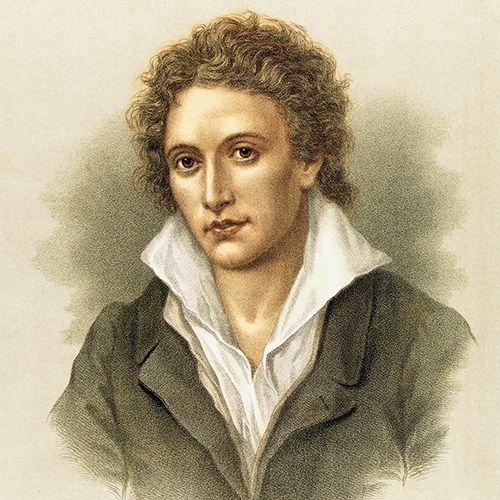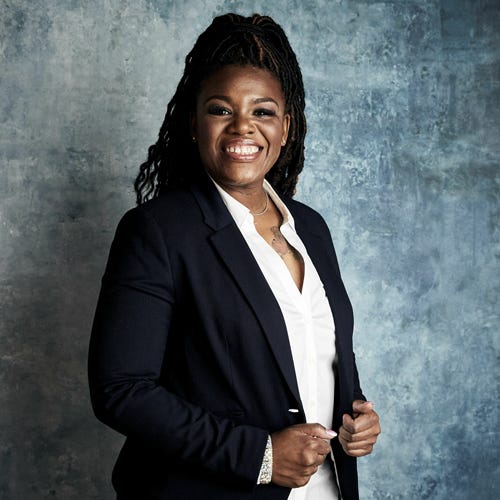You are viewing the article Percy Bysshe Shelley at hec.edu.vn you can quickly access the necessary information in the table of contents of the article below.
Percy Bysshe Shelley, a prominent figure in English Romantic poetry, captivated audiences with his passionate and rebellious nature. Born in 1792 to a family of aristocrats, Shelley defied societal norms throughout his short but remarkable life. Known for his radical political beliefs, fervent social activism, and lyrical poetry, Shelley became one of the most influential poets of his time. His works, including “Ode to the West Wind,” “Prometheus Unbound,” and “The Masque of Anarchy,” challenged the oppressive systems of his era, advocating for individualism, freedom, and equality. Despite facing criticism and controversy during his lifetime, Shelley’s legacy lives on as an emblem of poetic innovation and political dissent. In this essay, we will explore the life, works, and enduring impact of Percy Bysshe Shelley on English literature and the world at large.

(1792-1822)
Who Was Percy Bysshe Shelley?
Percy Bysshe Shelley is one of the epic poets of the 19th century and is best known for his classic anthology verse works such as Ode to the West Wind and The Masque of Anarchy. He is also well known for his long-form poetry, including Queen Mab and Alastor. He went on many adventures with his second wife, Mary Shelley, the author of Frankenstein.
Early Life
Percy Bysshe Shelley, a controversial English writer of great personal conviction, was born on August 4, 1792. He was born and raised in the English countryside in the village Broadbridge Heath, just outside of West Sussex. He learned to fish and hunt in the meadows surrounding his home, often surveying the rivers and fields with his cousin and good friend Thomas Medwin. His parents were Timothy Shelley, a squire and member of Parliament, and Elizabeth Pilfold. The oldest of their seven children, Shelley left home at age of 10 to study at Syon House Academy, about 50 miles north of Broadbridge Heath and 10 miles west of central London. After two years, he enrolled at Eton College. While there, he was severely bullied, both physical and mentally, by his classmates. Shelley retreated into his imagination. Within a year’s time, he had published two novels and two volumes of poetry, including St Irvyne and Posthumous Fragments of Margaret Nicholson.
In the fall of 1810, Shelly entered University College, Oxford. It seemed a better academic environment for him than Eton, but after a few months, a dean demanded that Shelley visit his office. Shelley and his friend Thomas Jefferson Hogg had co-authored a pamphlet titled The Necessity of Atheism. Its premise shocked and appalled the faculty (“…The mind cannot believe in the existence of a God.”), and the university demanded that both boys either acknowledge or deny authorship. Shelley did neither and was expelled.
Shelley’s parents were so exasperated by their son’s actions that they demanded he forsake his beliefs, including vegetarianism, political radicalism and sexual freedom. In August 1811, Shelley eloped with Harriet Westbrook, a 16-year-old woman his parents had explicitly forbidden him to see. His love for her was centered on the hope that he could save her from committing suicide. They eloped, but Shelley was soon annoyed with her and became interested in a woman named Elizabeth Hitchener, a schoolteacher who inspired his first major poem, Queen Mab. The poem’s title character, a fairy originally invented by William Shakespeare and described in Romeo and Juliet, describes what a utopian society on earth would be like.
In addition to long-form poetry, Shelley also began writing political pamphlets, which he distributed by way of hot air balloons, glass bottles and paper boats. In 1812, he met his hero and future mentor, the radical political philosopher William Godwin, author of Political Justice.
Relationships with Harriet and Mary
Although Shelley’s relationship with Harriet remained troubled, the young couple had two children together. Their daughter, Elizabeth Ianthe, was born in June 1813, when Shelley was 21. Before their second child was born, Shelley abandoned his wife and immediately took up with another young woman. Well-educated and precocious, his new love interest was named Mary, the daughter of Shelley’s beloved mentor, Godwin, and Mary Wollstonecraft, the famous feminist author of A Vindication of the Rights of Women. To Shelley’s surprise, Godwin was not in favor of Shelley dating his daughter. In fact, Godwin so disapproved that he would not speak with Mary for the next three years. Shelley and Mary fled to Paris, taking Mary’s sister, Jane, with them. They departed London by ship and, mostly traveling by foot, toured France, Switzerland, Germany and Holland, often reading aloud to each other from the works of Shakespeare and Rousseau.
When the three finally returned home, Mary was pregnant and so was Shelley’s wife. The news of Mary’s pregnancy brought Harriet to her wit’s end. She requested a divorce and sued Shelley for alimony and full custody of their children. Harriet’s second child with Shelley, Charles, was born in November 1814. Three months later, Mary gave birth to a girl. The infant died just a few weeks later. In 1816, Mary gave birth to their son, William.
A dedicated vegetarian, Shelley authored several works on the diet and spiritual practice, including A Vindication of Natural Diet (1813). In 1815, Shelley wrote Alastor, or The Spirit of Solitude, a 720-line poem, now recognized as his first great work. That same year, Shelley’s grandfather passed away and left him an annual allowance of 1,000 British pounds.
Friendship with Lord Byron
In 1816, Mary’s step-sister, Claire Clairmont, invited Shelley and Mary to join her on a trip to Switzerland. Clairmont had begun dating the Romantic poet Lord Byron and wished to show him off to her sister. By the time they commenced the trip, Byron was less interested in Clairmont. Nevertheless, the three stayed in Switzerland all summer. Shelley rented a house on Lake Geneva close to Byron’s and the two men became fast friends. Shelley wrote incessantly during his visit. After a long day of boating with Byron, Shelley returned home and wrote Hymn to Intellectual Beauty. After a trip through the French Alps with Byron, he was inspired to write Mont Blanc, a pondering on the relationship between man and nature.
Harriet’s Death and Shelley’s Second Marriage
In the fall of 1816, Shelley and Mary returned to England to find that Mary’s half-sister, Fanny Imlay, had committed suicide. In December of the same year, it was discovered that Harriet had also committed suicide. She was found drowned in the Serpentine River in Hyde Park, London. A few weeks later, Shelley and Mary finally married. Mary’s father was delighted by the news and accepted his daughter back into the family fold. Amidst their celebration, however, loss pursued Shelley. Following Harriet’s death, the courts ruled not to give Shelley custody of their children, asserting that they would be better off with foster parents.
With these matters settled, Shelley and Mary moved to Marlow, a small village in Buckinghamshire. There, Shelley befriended John Keats and Leigh Hunt, both talented poets and writers. Shelley’s conversations with them encouraged his own literary pursuits. Around 1817, he wrote Laon and Cythna; or, The Revolution of the Golden City. His publishers balked at the main storyline, which centers on incestuous lovers. He was asked to edit it and to find a new title for the work. In 1818, he reissued it as The Revolt of Islam. Though the title suggests the subject of Islam, the poem’s focus is religion in general and features socialist political themes.
Life in Italy
Shortly after the publication of The Revolt of Islam, Shelley, Mary and Clairmont left for Italy. Byron was living in Venice, and Clairmont was on a mission to bring their daughter, Allegra, to visit with him. For the next several years, Shelley and Mary moved from city to city. While in Venice, their baby daughter, Clara Everina, died. A year later, their son William also passed away. Around this time, Shelley wrote Prometheus Unbound. During their residency in Livorno, in 1819, he wrote The Cenci and The Masque of Anarchy and Men of England, a response to the Peterloo Massacre in England.
Death and Legacy
On July 8, 1822, just shy of turning 30, Shelley drowned while sailing his schooner back from Livorno to Lerici, after having met with Hunt to discuss their newly printed journal, The Liberal. Despite conflicting evidence, most papers reported Shelley’s death as an accident. However, based on the scene that was discovered on the boat’s deck, others speculated that he might have been murdered by an enemy who detested his political beliefs.
Shelley’s body was cremated on the beach in Viareggio, where his body had washed ashore. Mary, as was the custom for women during the time, did not attend her husband’s funeral. Shelley’s ashes were interred in the Protestant Cemetery in Rome. More than a century later, he was memorialized in Poet’s Corner in Westminster Abbey.
QUICK FACTS
- Name: Shelley Bysshe
- Birth Year: 1792
- Birth date: August 4, 1792
- Birth City: Broadbridge Heath, England
- Birth Country: England
- Gender: Male
- Best Known For: Known for his lyrical and long-form verse, Percy Bysshe Shelley was a prominent English Romantic poet and was one of the most highly regarded and influential poets of the 19th century.
- Industries
- Education and Academia
- Fiction and Poetry
- Art
- Astrological Sign: Leo
- Schools
- Eton College
- Syon House Academy
- Death Year: 1822
- Death date: July 8, 1822
- Death City: Viareggio
- Death Country: Italy
Fact Check
We strive for accuracy and fairness.If you see something that doesn’t look right,contact us!
CITATION INFORMATION
- Article Title: Percy Bysshe Shelley Biography
- Author: Biography.com Editors
- Website Name: The Biography.com website
- Url: https://www.biography.com/authors-writers/percy-bysshe-shelley
- Access Date:
- Publisher: A&E; Television Networks
- Last Updated: March 26, 2021
- Original Published Date: April 2, 2014
QUOTES
- If Winter Comes, can Spring be far behind?
In conclusion, Percy Bysshe Shelley was a remarkable poet and thinker who made a significant impact on English literature and Romanticism. His poetic works, with their vivid imagery and powerful themes, conveyed his passion for social justice, freedom, and the beauty of nature. Despite facing criticism and controversy during his lifetime, Shelley’s poems continue to inspire readers with their timeless relevance and profound artistic brilliance. Through his works, Shelley challenged societal norms, pushed the boundaries of poetic expression, and left a lasting legacy. His contributions to literature and his fervent belief in the power of poetry to instigate change will forever be remembered as an integral part of the Romantic movement. Percy Bysshe Shelley’s artistic genius and progressive ideology continue to captivate and inspire readers, making him an enduring figure in the annals of literary history.
Thank you for reading this post Percy Bysshe Shelley at hec.edu.vn You can comment, see more related articles below and hope to help you with interesting information.
Related Search:
1. Percy Bysshe Shelley biography
2. Analysis of Percy Bysshe Shelley’s works
3. Major themes in Percy Bysshe Shelley’s poetry
4. Shelley’s influence on the Romantic movement
5. Percy Bysshe Shelley and his relationship to Mary Shelley
6. The political views of Percy Bysshe Shelley
7. Comparisons between Shelley and other Romantic poets, such as Keats and Byron
8. The impact of Shelley’s poems on society during his time
9. Critical reception of Percy Bysshe Shelley’s poetry
10. Selected works of Percy Bysshe Shelley


